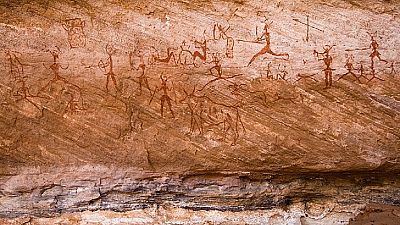Lebanon
The rock-art sites of Tadrart Acacus in Libya have long been an attraction to many with its cave paintings dating back as far as 12,000 years ago.
The art marked changes in the fauna and flora, and also the different ways of life of the populations that succeeded one another in this region of the Sahara.
But the sites have been the object of deliberate and considerable destruction with the paintings gradually losing their lustre through acts of vandalism.
“These paintings were destroyed by tourists and even tour guides who sprayed water on them to bring out the colours for their souvenir pictures,” said Shawki Mummer a History teacher
This has made the area less popular for tourists.
“Tourists came by cars, on foot and on camels. But since these paintings were vandalized in 2008, there’s not much tourists can do here,” said Balolen Issa, a resident in the region.
The area was inscribed as a UNESCO World Heritage Site in 1985 because of the importance of its paintings and carvings.
#Libya' traces & the hands of the abusers! #Acacus #Mountains, really sad to see this happen! https://t.co/GQeSfbFgsa pic.twitter.com/jkyhpnYH1s
— Gihan Badi (@GihanTadreft) January 9, 2014
Africa’s ancient art is disappearing and needs to be protected urgently.












00:59
Lebanon: Ceasefire deal between Israel and Hezbollah comes into effect
01:05
MED Dialogues conference kicks off with a focus on Middle East conflict
01:04
Mideast wars top agenda of G7 nations on first day of conference
00:55
EU's top diplomat Josep Borrell visits Lebanon as escalations continue
02:19
Morocco exhibition shows treasures of ancient port city of Chellah
01:04
UN urges ceasefire in the wake of killing of Hamas leader